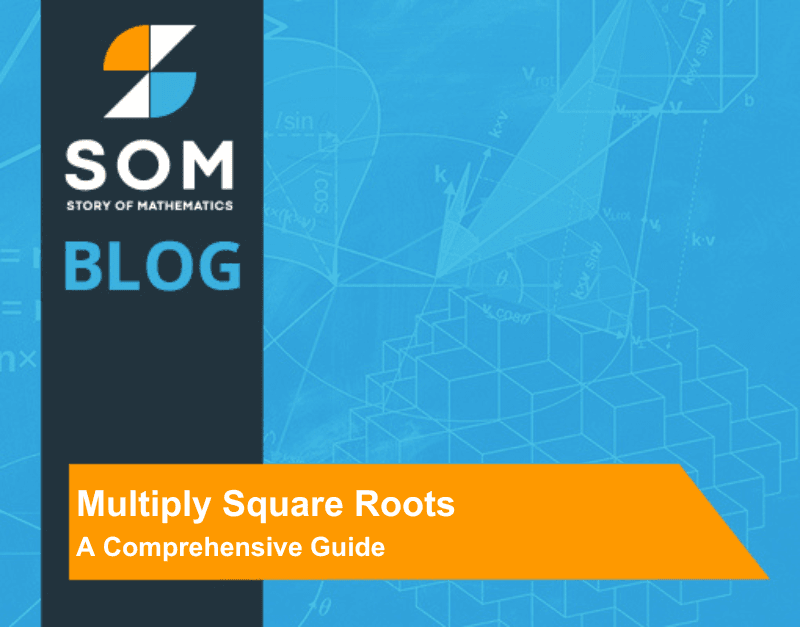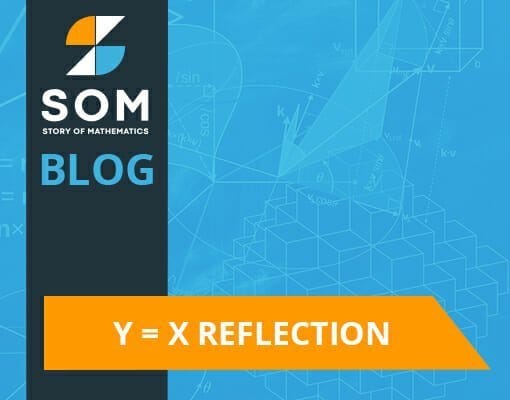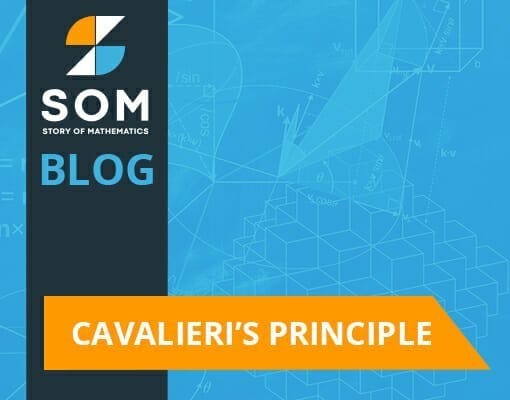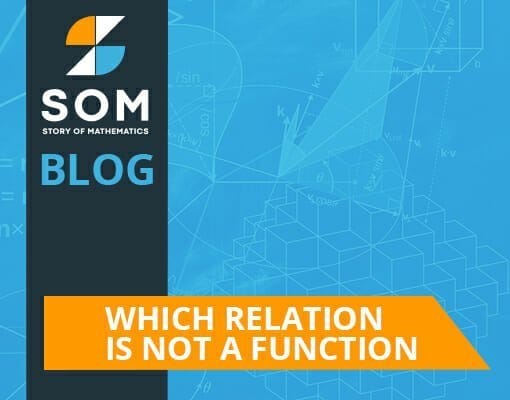Multiplying square roots is a fundamental concept in mathematics that involves simplifying and performing operations with expressions containing square roots. Whether you’re working on algebraic equations, geometry problems, or calculus applications, understanding how to multiply square roots is essential. The methods and guidelines for multiplying square roots will be covered in this article, along with […]
Search results for: circle
Mastering the Integration of csc(x) – A Comprehensive Guide
Welcome to an illuminating exploration of the integration of csc(x)! In the realm of calculus, the integral of the cosecant function holds intriguing properties and applications. This article delves into the world of csc(x) integration, where we will unlock its secrets and reveal the techniques required to tackle its challenges. From the fundamental concepts of […]
y = x Reflection – Definition, Process and Examples
The $boldsymbol{ y = x}$ reflection is simply “flipping” a shape or a point over a diagonal line. Since $ y= x$ reflection is a special type of reflection, it can also be classified as a rigid transformation. Knowing how to reflect over the line $y=x$ will come in handy when graphing functions and predicting […]
Cavalieri’s Principle – Definition, Conditions and Applications
The Cavalieri’s Principle relates the volumes of two solids given their cross-sections and heights. This principle is also helpful when comparing the areas of two solids given their respective bases and heights. Understanding Cavalieri’s Principle leads to a wide range of properties shared by two and three-dimensional figures. Cavalieri’s Principle states that when the two […]
Incenter Theorem – Definition, Conditions and Examples
The incenter theorem shows that the angle bisectors dividing the triangle’s vertices are concurrent. This theorem establishes the properties and formula of incenters, inradius, and even incircles. These properties and theorem open a wide range of applications and other properties of triangles. The incenter theorem states that the incenter (intersection of the triangle’s angle bisector) […]
Pythagorean Identities – Formula, Derivation, and Applications
The Pythagorean identities are important trigonometric identities that allow us to simplify trigonometric expressions, derive other trigonometric identities, and solve equations. Understanding these identities is essential when building a strong foundation to master trigonometric concepts and learn more advanced math topics. The Pythagorean identities are derived from the Pythagorean theorem. We use these identities to […]
The Hypersphere-Understanding Dimensions Beyond Three
In the awe-inspiring universe of mathematics and geometry, concepts extend beyond the standard three dimensions we experience daily. One such captivating idea is that of a hypersphere, an object existing in four or more dimensions, transcending our usual comprehension of space. Known as a higher-dimensional analogue of a sphere, the hypersphere represents a quantum leap in our understanding of geometric […]
Which Relation Is Not a Function? Explanation and Examples
In mathematics, you will come across relations and functions quite often, but one burning question that arises in many students’ minds is which relation is not a function. A relation that does not have the properties of a function is just a simple relation. Every function is a relation but every relation is not a […]
Mastering Heptagons – A Beginner’s Guide
A heptagon is a geometric figure that belongs to the broader category of polygons. Polygons are closed, two-dimensional shapes composed of straight lines. While it may seem like just another simple geometric shape, the heptagon presents fascinating complexities in its properties, historical uses, and real-world applications. Brief Overview of the Article This exploration into the […]
Exploring Quartic Function – Properties, Applications, and Examples
In the vast and interconnected realm of mathematical functions, quartic functions hold a position of unique interest and versatility. Characterized by a degree of four, these functions, defined by a fourth-degree polynomial, wield significant influence across numerous aspects of mathematical theory and its many practical applications. As the next step beyond linear, quadratic, and cubic […]
Open Interval | Definition & Meaning
Open Interval|Definition & Meaning Definition An interval that does not contain the endpoints is termed an open interval. For example, an open interval between x and y would consist of all the numbers between x and y but not including either of the numbers. Notation Open interval is generally represented with parentheses. Thus, the open […]
Cylinder | Definition & Meaning
Cylinder|Definition & Meaning Definition A cylinder is a special three-dimensional solid geometrical shape that consists of two flat circles at either end joined by a curved surface. The circles are referred to as the bases and the perpendicular distance between them represents the height of the cylinder. What Is a Cylinder? A cylinder is a […]
Width | Definition & Meaning
Width|Definition & Meaning Definition The width of a shape or object is its lateral or side-to-side distance. Since it represents length, it can be measured in any of the units of length, such as m, cm, inches, feet, etc. It can also represent the spacing between two parallel lines and other things. One way to […]
Hour Hand | Definition & Meaning
Hour Hand|Definition & Meaning Definition In an analog clock, the smallest of the three hands that refers to the hours is called an hour hand. The hour hand makes one complete revolution of the clock in 12 hours. What Is an Hour Hand? The hour hand, also known as the shorthand, is a pointer on […]
Rotational Symmetry | Definition & Meaning
Rotational Symmetry|Definition & Meaning Definition A figure which becomes identical to itself after rotation through some angel is said to have rotational symmetry. For some figures, the rotation must be through a certain angle e.g., a 90 degrees rotation for a Square produces identical figure. However, for a circle and ellipse – rotation through any […]
Reflection Symmetry | Definition & Meaning
Reflection Symmetry|Definition & Meaning Definition A geometrical figure which is identical to its reflection is said to possess reflection symmetry. For example, a square and a rectangle both have reflection symmetry since their mirror image is exactly identical to the original figures. Shapes that have reflection symmetry have a line of symmetry that divides the […]
Square Meter | Definition & Meaning
Square Meter|Definition & Meaning Definition Square meter is a unit of area denoted by m$^2$. 1 square meter is defined as the area of a square whose sides are 1 meter each. It is the most commonly used unit for the area of geometrical shapes. Why Do We Use a Square Meter? A Square meter […]
Segment | Definition & Meaning
Segment|Definition & Meaning Definition In geometry, the term segment means one of two things: part of a line (a line segment) or one of the two parts of a circle when it is split by a line or a chord of that circle (a circular segment). However, since a line segment is part of a […]
Balance Scales | Definition & Meaning
Balance Scales|Definition & Meaning Definition A device with a balanced beam and two pans hanging from it. The beam is balanced only when both pans weigh the same. Thus, with a set of reference weights, we can place an object of unknown weight in one pan and remove or add known weights in the other […]
Twice | Definition & Meaning
Twice|Definition & Meaning Definition Twice refers to the mathematical operation of multiplying a number with 2. It is also called the double or two times the number. For a number a, twice the number is written as 2a. It can also be expressed as the addition of the number with itself since 2a = a […]
Property | Definition & Meaning
Property|Definition & Meaning Definition Defining characteristics or qualities that allow us to identify a particular thing and distinguish it from others. For example, symmetry and dimensionality. A circle is perfectly symmetrical around any line passing through its center, while a trapezium has no line of symmetry. Similarly, a circle is a two-dimensional shape, whereas a […]
Metre Meter | Definition & Meaning
Metre (Meter)|Definition & Meaning Definition Meter (metre in the UK) is the standard unit of length in SI units (also called the Metric system). It is abbreviated with the letter m and officially defined as the distances covered by the light within a vacuum in exactly 1/299,792,458 parts of a second. What Is a Meter? […]
Imperial System | Definition & Meaning
Imperial System|Definition & Meaning Definition The imperial system is a system of units and measures developed in England, although it has been replaced by the metric system in almost all countries. Except for the volume measurements (all imperial volume units are larger than their US counterparts), all other units are exactly the same as in […]
Half | Definition & Meaning
Half|Definition & Meaning Definition A half is one of the two equally split parts of a whole. For example, if you halved a cake to share it with your friend, you and your friend would get half of that cake. In fractions, a half is represented as 1/2. Figure 1 – Mathematical and Graphical Representation […]
Dozen | Definition & Meaning
Dozen|Definition & Meaning Definition Exactly twelve of anything is called a dozen. This term is mostly used in the context of eggs which we usually buy “by the dozen” i.e., in packages of twelve or a dozen eggs. However, we still use it in the context of fruits and to refer to various groups of […]
Plane Shape | Definition & Meaning
Plane Shape|Definition & Meaning Definition Any two-dimensional or “flat” shape is called a plane shape. A plane has length and width but no thickness, which is true for all two-dimensional shapes as well. Therefore, we call them plane shapes. Examples include rectangles, triangles, circles, ellipses, etc. What Is a Plane Shape? In mathematics, a plane […]
Halve | Definition & Meaning
Halve|Definition & Meaning Definition To halve something means to split it into two equal parts (called halves, singular half). It is the literal opposite of double. Mathematically, it is a division by two or multiplication by the fraction 1/2 (called one-half). We work with halves every day. For example, when you share a sandwich with […]
Tessellation | Definition & Meaning
Tessellation|Definition & Meaning Definition Tessellation refers to covering a given surface with a pattern of flat shapes (either repeating or non-repeating) in such a way that no shape overlaps another, and there’s no gap between any two shapes. Real-life examples include the pattern of a brick wall (its surface is tessellated rectangles) and many types […]
Tangent Line | Definition & Meaning
Tangent Line|Definition & Meaning Definition A tangent line is one that touches any given curved line (in 2D) or curved surface (in 3D) at only one point. A tangent line has the property that its slope is equal to the slope of the curve at that tangent point. Figure 1 illustrates the difference between tangent, […]
Symmetry | Definition & Meaning
Symmetry|Definition & Meaning Definition An object has symmetry if two or more parts of it look exactly the same after flipping, sliding, or rotating one. In other words, symmetry is a property of an object that allows it to ignore the effects of manipulations and transformations and maintain a unique look. For example, your reflection […]
Subtended Angle | Definition & Meaning
Subtended Angle|Definition & Meaning Definition A subtended angle represents the angle cast by an object onto some viewpoint. Suppose a person is looking at a building. The top and bottom of the building form two lines to the person’s eyes, and the angle between these lines is the angle subtended by the building onto the […]
Surface | Definition & Meaning
Surface|Definition & Meaning Definition The outer boundary of any three-dimensional object is called the surface. It may be flat as in a pyramid or curved as in a sphere or cylinder. By definition, it is 2D and therefore has no thickness but does have area. The area occupied by the surface is generally called the […]
Surd | Definition & Meaning
Surd|Definition & Meaning Definition A surd is any number whose nth root (square root, cube root, etc.) cannot be simplified so as to remove the radical sign, e.g., $sqrt{2}$ and $sqrt[3]{4}$. Unless the radicand can be factorized into parts that are all perfectly expressible as a power of the radical’s index (perfect squares for square […]
Square Measure | Definition & Meaning
Square Measure|Definition & Meaning Definition Any unit that measures area is called a square measure. Therefore, all squared units of length (e.g., squared meters or m$^2$, squared centimeters or cm$^2$) and some special units like hectares (ha = 100 m x 100 m = 10,000 square meters) and acres (ac = 0.4047 hectares) are called […]
Solid | Definition & Meaning
Solid|Definition & Meaning Definition Any three-dimensional object is generally called a solid. These are shapes as we perceive them around us. Unlike 2D shapes, solids have the third dimension of depth in addition to length and width, which leads to the concept of volume. Pyramids, cylinders, cubes, spheres, etc., are all examples of solid 3D […]
Sinh | Definition & Meaning
Sinh|Definition & Meaning Definition Sinh (pronounced as “shine”) represents the hyperbolic sine function. While the trigonometric function sine is defined as a circle, sinh is related to measurements from a hyperbola. It involves the natural exponential term e$^x$: [ sinh(x) = frac{e^x-e^{-x}}{2} ] What Is a Hyperbolic Function? Similar to the circle and trigonometric functions, […]
Similar | Definition & Meaning
Similar|Definition & Meaning Definition In geometry, two shapes or objects are similar if re-scaling, flipping, translating, or rotating one of them results in the other shape or object. For example, the corresponding sides of similar triangles are proportional (i.e., corresponding angles are equal). This implies that we can form infinitely many shapes from just one […]
Semi | Definition & Meaning
Semi|Definition & Meaning Definition Semi literally means “half.” It is used as a prefix to imply halves of various things. For example, semi-annually means every half-year (e.g., interest compounding), semicircle means a half circle, and semi-major and minor axes mean half the major and minor axes of ellipses. It is also used in other contexts, […]
Sector | Definition & Meaning
Sector|Definition & Meaning Definition A sector of a circle is a closed region bounded by an arc and any two radii connecting the ends of that arc to the center of the circle. It looks like a slice of cake or pizza. The area of a sector is always less than the circle’s area. The […]
Row | Definition & Meaning
Row|Definition & Meaning Definition In mathematics, a row is a general term describing things that lie horizontally adjacent (left-right) to each other. This is contrary to columns, which describe things lying vertically adjacent (up-down) to each other. A row refers to the way that items can be arranged. Although rows and columns are frequently combined […]
Rhombus | Definition & Meaning
Rhombus|Definition & Meaning Definition A rhombus is a two-dimensional (or flat), closed shape with four equal-length straight sides such that the opposite angles are equal and the opposite sides are parallel to each other. In other words, it is a parallelogram with all four sides equal. A square is a type of rhombus where all […]
Revolution | Definition & Meaning
Revolution|Definition & Meaning Definition A revolution means a full circular rotation such that you end up in the same position you started turning from. Usually, the object is spinning around some axis. In two dimensions, a revolution is a full 360-degree rotation about some center point. For example, if you rotate a point on a […]
Curvature Formula – Definition, Properties, and Examples
The curvature formula an expressed equation gives us a way to quantitatively understand how shapes bend and reveal their inherent properties. In this article, we will dive into the intricacies of the curvature formula examine how it was derived, and highlight its importance in disciplines such, as architecture and theoretical physics. Definition of the Curvature […]
Parametric equations – Explanation and Examples
Parametric Equation – Explanation and Examples In mathematics, a parametric equation is explained as: “A form of the equation that has an independent variable in terms of which any other equation is defined, and dependent variables involved in such an equation are continuous functions of the independent parameter.” For instance, let us consider the equation […]
Polar Coordinates – Definition, Conversion, and Examples
Polar Coordinates – Definition, Conversion, and Examples Polar coordinates help us represent objects or relationships that are centrosymmetric (symmetric with respect to a common center). The polar coordinate system, along with the rectangular coordinate system, is one of the most used and most helpful coordinate systems there are. In fact, there are instances when a […]
Polar Curves – Definition, Types of Polar Curves, and Examples
Polar Curves – Definition, Types of Polar Curves, and Examples Polar curves give us a better understanding of how we graph equations with a different coordinate system than what we’re used to. In the past, we’ve learned about polar coordinates, so it’s time for us to expand our graphing skills on the polar coordinate system. […]
Parametric Curves – Definition, Graphs, and Examples
Parametric Curves – Definition, Graphs, and Examples Learning about parametric curves will give us one more with special attributes (time to be specific). There are instances when modeling quantities using parametric curves is more helpful than graphing them in the coordinate systems that we know – rectangular and polar coordinate systems. This is why it’s […]
Quadric surfaces – Definition, Types, and Examples
Quadric Surfaces – Definition, Types, and Examples Knowing about common quadric surfaces will help us understand how second-degree equations can be graphed in space. Ellipsoids and hyperboloids are just two of the many quadric surfaces that are widely used in early computer-aided architecture and engineering models. Of course, learning about quadric surfaces will also help […]
Vector function – Definition, Properties, and Explanation
Vector Function – Definition, Properties, and Explanation The vector functions allow us to visualize functions in two or three-dimensional coordinate systems and account for another element: the direction of the curve. Similar to parametric functions, vector functions depend on parameters to visualize their graphs. These functions are most helpful when we’re observing different types of […]
Lagrange Multipliers – Definition, Optimization Problems, and Examples
Lagrange Multipliers – Definition, Optimization Problems, and Examples The method of Lagrange multipliers allows us to address optimization problems in different fields of applications. This includes physics, economics, and information theory. Seeing the wide range of applications this method opens up for us, it’s important that we understand the process of finding extreme values using […]










